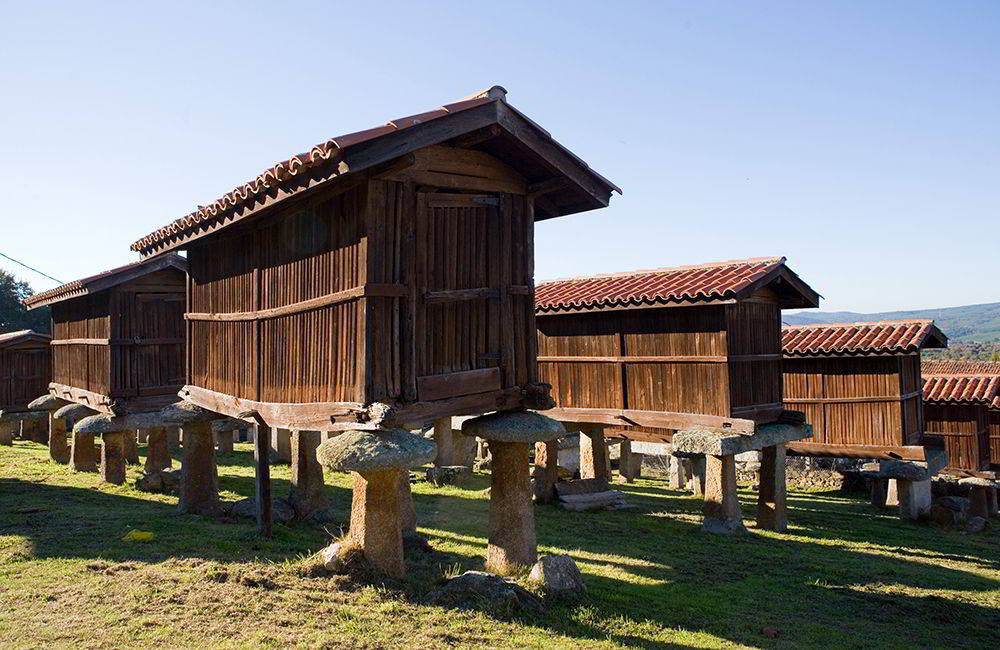Green Spain boasts both large and small cities. Cities that face the sea and cities that gaze at the mountains. They all share one common trait: they are excellent choices for enjoying a bit of Christmas shopping.
Avilés (Asturias)
What to See in Avilés
Avilés is a city with a fascinating past (both fishing and industrial) that hides a unique historic center. Its medieval quarter boasts one of the largest concentrations of arcaded streets in Spain: over three kilometers of sheltered walkways to escape the rain and cold Cantabrian winters. Another highlight? At the beginning of the 21st century, the Niemeyer Center was built on former industrial grounds. It’s the only work of the famous Brazilian architect in Spain. The complex is worth visiting not only for its cultural agenda but also for its many Instagram-worthy photo and video opportunities.
Best Shopping Areas in Avilés
- Calle de la Cámara: A pedestrian street starting near the Town Hall and winding its way to the Church of Santo Tomás de Canterbury, offering a great selection of local shops and major brands.
- La Plaza: The city’s traditional market, where you’ll find all the fresh gastronomic treasures Asturias has to offer, from the sea, mountains, and meadows. A must-see!
A Typical Sweet from Avilés
Marañuelas are likely the most emblematic sweets from the triangle formed by Avilés, Candás, and Luanco. In Avilés, they have a bun-like texture, while in Candás and Luanco, they resemble buttery cookies or pastries. Both versions are a delight for anyone with a sweet tooth.
Vitoria-Gasteiz (Basque Country)
What to See in Vitoria-Gasteiz
The most inland and elevated of the Basque capitals (525 meters above sea level), Vitoria-Gasteiz combines a medieval old town with alleyways shaped like an almond, dominated by a Gothic cathedral, on the other, a modern, human-scaled city with early 20th-century expansions featuring numerous green spaces designed to provide fresh air for its residents. A century later, Vitoria-Gasteiz remains the quintessential Green Capital.
Vitoria-Gasteiz also boasts a strong cultural offering, with an extensive network of museums and music festivals. And yes, the city excels in crafting delicious Basque pintxos.
Best Shopping Areas in Vitoria-Gasteiz
- Calle Dato: The commercial heart of the 19th-century expansion area, alongside its perpendicular (Calle Postas), parallel (Fueros), and nearby streets like San Prudencio or General Álava. It’s a charming street ideal for shopping, with cafes and restaurants.
- Medieval Almond: Known for its bars, museums, and the Gothic Cathedral of Santa María, the old town also hosts charming local stores such as bookstores, craft shops, antique dealers, and small fashion boutiques.
A Typical Sweet from Vitoria-Gasteiz
Vasquitos and neskitas are the flagship sweets of Alava. These chocolates come filled with orange, nuts, or toffee cream, making them perfect for enjoying on the spot or as a souvenir or gift.
Santander (Cantabria)
What to See in Santander
Is it possible to be a typically northern city, deeply Cantabrian, proudly part of Green Spain, and still look to the south? Yes, it is. Santander proves this, as it faces the warm, sunny midday sun while being sheltered from storms. The city embraces the sea in various ways: through its former port docks, now cultural hubs thanks to the Botín Center; through the Belle Époque Sardinero beach; and through the idyllic Magdalena Island, a lush forest crowned by the Magdalena Palace, a former royal retreat. Santander’s inland area also features Gothic architecture and a modern street layout developed after a devastating fire nearly a century ago.
Best Shopping Areas in Santander
- Calle San Francisco: A pedestrianized street with a bohemian vibe, blending historic shops, modern stores, and artisan goods.
- Mercado de la Esperanza: The perfect place to discover and buy the best Cantabrian gastronomic products.
- Calle Juan de Herrera: A bustling pedestrian street connected to Calle Burgos, leading to the Porticada Square and the Este Market.
A Cantabrian Sweet
Santander serves as a melting pot for Cantabrian sweets, including the nationally renowned sobaos pasiegos and quesadas. The former is a treat with coffee; the latter is a delight on its own.
Vigo (Galicia)
What to See in Vigo
Recently, Vigo has become Spain’s ultimate Christmas city, dazzling with its spectacular light displays that grow each year. Beyond that, Vigo is a dynamic, cosmopolitan city with cultural vibrancy. Born and raised around a fishing port, the city boasts urban gems in the Casco Vello, Ensanche, Berbés fishing quarter, and Santa María Co-Cathedral. Fun fact: the García Barbón Theater was inspired by the Paris Opera House.
Best Shopping Areas in Vigo
- Calle del Príncipe: Undoubtedly the main shopping street, bustling with life and offering a mix of local and international shops.
- Surrounding Streets near Porta do Sol: The pedestrianized and semi-pedestrianized streets around Porta do Sol are a hive of commerce, perfect for exploring aimlessly.
- Mercado del Progreso: A central market recently renovated, ideal for an authentic gastronomic experience.
A Typical Sweet from Vigo
Filloas are Galicia’s version of crêpes: thin, delicate pancakes that can be enjoyed with honey, chocolate, quince paste, cooked chestnuts, or savory options. Tasting them freshly made is a heavenly experience.















